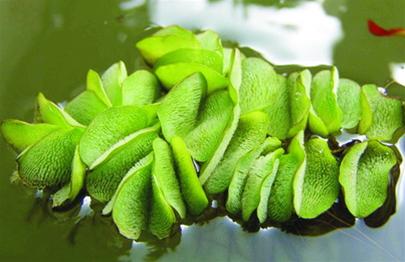Be wary of big mouse ears
Giant waterweed ( Salvinia molesta DS Mitchell, Salviniaceae family, belonging to plant defects; English giant water fern, or giant salvinia), is one of the most invasive alien plants considered to be the most dangerous. Around the world. And this dangerous invasive alien species has appeared in Ho Chi Minh City .
The giant rat ear is an aquatic plant bug originating in South America (southern Brazil to northern Argentina) adapted to the hot and humid climate of the tropics and subtropics. This is a freshwater plant, floating on the water, usually grows in static or slow-flowing water in rice fields, ponds, lakes, marshes, canals and small canals. In addition to nature, they spread from place to place mainly through water flow, in addition to clinging to water transport vehicles. Large rat ears are also commonly used in aquariums and trade in ornamental organisms is one of the most important pathways.

Beo ear big mouse (taken on October 22, 2006 in District 7, HCMC)
(Photo: Tran Triet)
Big ears have a very fast growth rate , forming thick carpets, sometimes up to 60cm, completely covering the water surface. The carpet works to prevent light and reduce the penetration of oxygen into the water environment. Large rat ear can produce a huge amount of fresh biomass, up to 400 tons / ha. The decomposition of this biomass makes water dissolved oxygen levels continue to decline, creating an adverse environment for most aquatic organisms.
The invasion of large mice into natural and man-made water bodies can cause huge economic losses. Many reports show that they are capable of clogging water supply and drainage channels, irrigation intake gates, restricting waterway traffic, and reducing fish production and making fishing difficult. Thick layer of carpet also facilitates the increase of some vectors of transmission through water environment as in the case of malaria, dengue fever, encephalitis (encephalitis).
Field surveys in the whole country over the past years have not recorded the presence of large rat ears in natural waters in Vietnam. The latest global database of invasive alien organisms (July 2006 version) did not record this species in Vietnam. However, recently we have discovered big rat ears in some aquatic gardens in Ho Chi Minh City. The director of a famous garden design company in Ho Chi Minh City said this species has been used in aquariums for a few years now. The technicians of the company also said that the big rat was raised by the company in pots to be used for construction and must be removed regularly because the speed is too fast.
Once in the aquariums, sooner or later the big mouse will escape into the wild. It is important to be aware that this is a very invasive species and it is necessary to apply the necessary measures soon to limit their spread. First, those who trade and enjoy aquariums need to be responsible for limiting the spread of this species into the natural environment. If they are removed, they must be destroyed (put into plastic bags or burial sites), going to not use this species in aquariums.
Natural conservation areas of wetlands in freshwater environments (eg Tram Chim, Lang Sen, U Minh Thuong, U Minh Ha, Cat Tien, Lo Go Xa Mat) and management boards of reservoirs need special pay attention to the occurrence of large rat ears in their area and take measures to thoroughly handle them as soon as they arrive.
Biological control measures

(Photo: ScotT bauer)
Once a large rat has spread to a large extent, the biological control measure is considered to be very effective.Research in Australia shows that the beetle Cyrtobagous salviniae has a great ability to eradicate rats.This small insect chisels into the underground body and goes up to feed on the bud, quickly reducing the large rat population.
Dr. TRAN TRIET ( University of Natural Sciences, National University of Ho Chi Minh City)
- Amazing things from ears
- New finding: Mice don't laugh with their mouth but with their ears
- How to handle when insects get into their ears
- Desert snakes hear mouse steps with jaws
- See artificial ear from human ribs
- Reconstructing ears from patient cells
- Successfully nourish human ears on mice
- The user's emotional intelligence system through the use of mouse
- Not a cotton swab, people can also take candle wax
- New technology creates fake ear like and works like real ears
- This is the only group of people who can use cotton swabs to brush their ears
- Mouse Master: Adjust mouse speed
 Why do potatoes have eyes?
Why do potatoes have eyes? 'Tragedy' the world's largest carnivorous life: Death becomes ... public toilet
'Tragedy' the world's largest carnivorous life: Death becomes ... public toilet Tomatoes were once considered 'poisonous' for 200 years
Tomatoes were once considered 'poisonous' for 200 years Detecting microscopic parasites on human face
Detecting microscopic parasites on human face